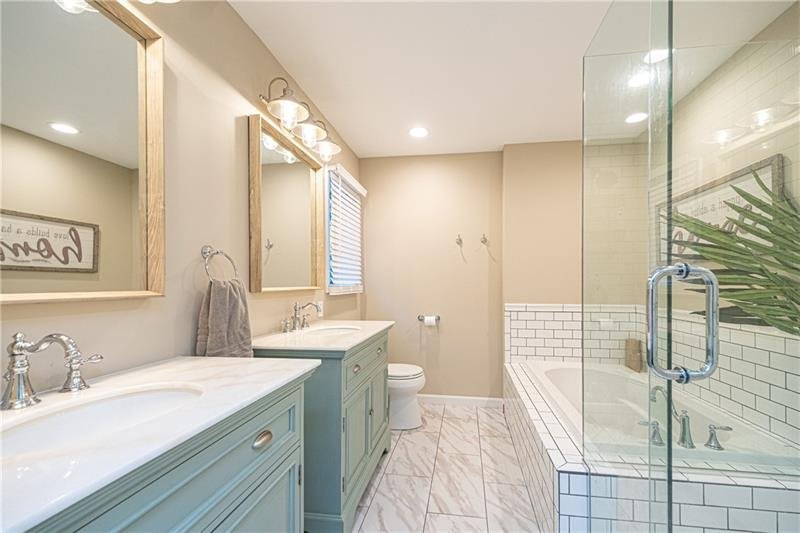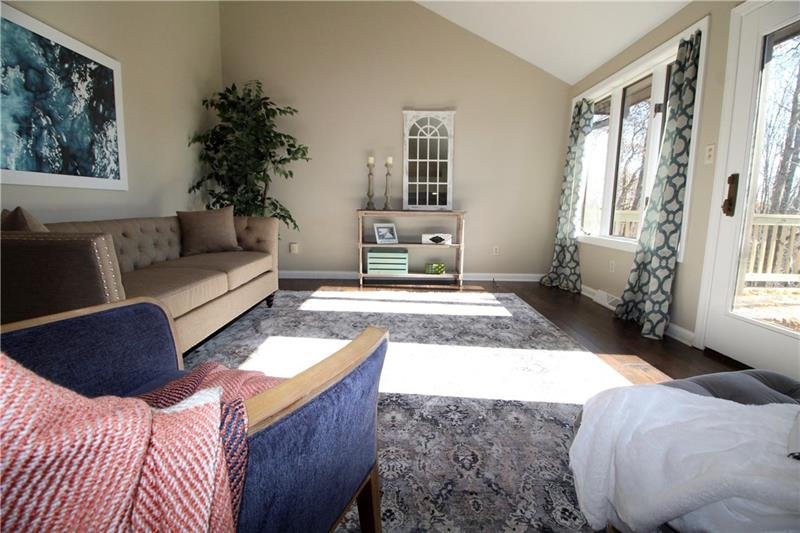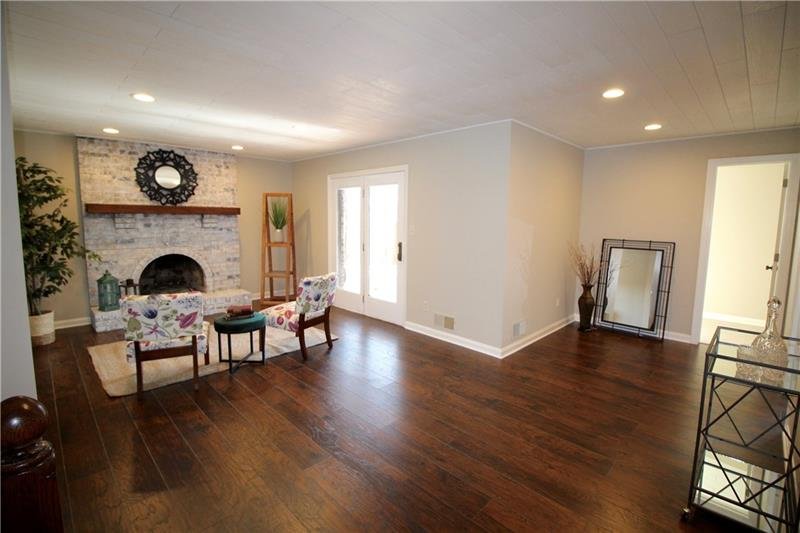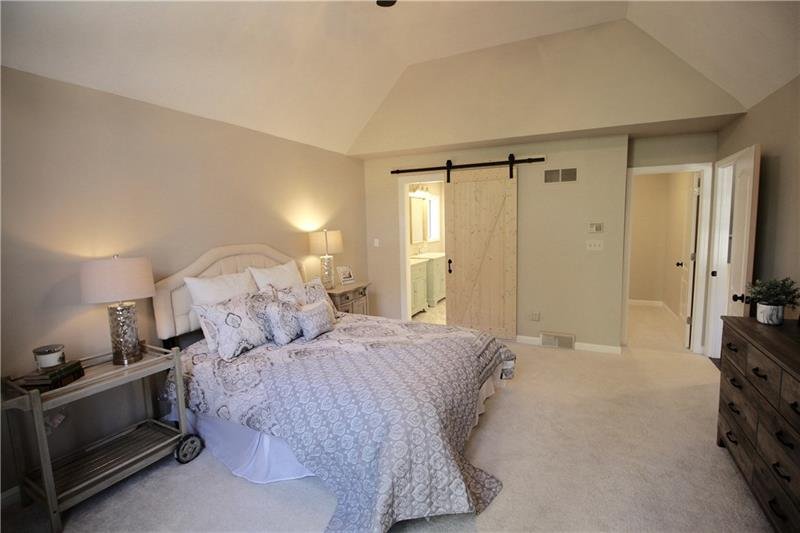How We LOST $20,000 On Our Second Flip
(and how to avoid doing so ever again)
+
*A Hiatus Explanation*
German Street Purchase
Over time, this early 1900s ten unit apartment building will be restored to its full potential and architectural beauty.
BEFORE: 102 Red Brush Trail Kitchen
AFTER: 102 Red Brush Trail Kitchen
Authored By: Kelley Perry
Well, followers, my unintentional break from this account has concluded. Since my last post on September 21st, and promise of more in a timely manner, my life was quite a bit off track from my “planned” schedule.
It began with my four and one-year old bouncing coughs and colds off each other for about six weeks, which triggered intermittent child care, various cancellations of appointments, etc. It ended with my husband getting the dreaded covid, which eliminated normal child care from anyone other than me entirely. In the middle, there was a three-week period with more sporadic child care thanks to various covid quarantine protocols with my babysitter dealing with her own children’s school exposures.
Additionally, I am pregnant! Now I will really see how many people I know read this, because I have not officially announced it anywhere, and don’t plan to for a while longer. Between August and September when I first found out, and at the time of my first few posts, I felt great. But at the onset of my own kids’ various illnesses, that changed and I basically felt like I had a level 10 hangover, all day, every day, for about 8 weeks.
Combined with workloads piling up and stressful babysitting situations (at no one’s fault – just situational realities), I was googling local therapists AND mediums the week leading up to Thanksgiving, preparing for the worst (which was if my kids and/or I would get covid, too, and have to cancel our Thanksgiving plans), and hoping for the best – that we could go on our trip to Florida with family as planned.
THANKFULLY, it was the latter. My husband Nick and I are both vaccinated (and still socially liberal Republicans – so wild!) so his symptoms were incredibly mild. As soon as he found out he had it, I took our kids to my parents and we quarantined there while we waited to take our own tests and receive those results. Fortunately, we stayed corona-free.
During this essentially three month period, I (honestly don’t know how) still managed to close on 3.26 million in sales, and get an additional 2.37 million under contract. I don’t ever say anything in this realm to sound egotistical in any way – there are some agents who do plenty more business than me – but I would genuinely love to meet someone who is doing it with two kids, four and under, through a first trimester morning (all day) sickness and with frequent battles from pandemic protocols. I’m serious, please reach out to me if it’s you - I’d love to have coffee. Or a drink, in several months.
This leads me to my most exciting investment update, prior to getting into the originally intended content of this post on our second flip, which is that I recently founded Waldosia Holdings, LLC, and bought our largest property to date – a ten-unit apartment building in the school district we live in. This property, I am certain, is going to be quite an experience. The numbers worked, but it is quite a large project to take on. The building was originally constructed in the early 1900s – pretty daunting when it comes to, for one example, uh, electrical work…
More on that later.
For now – let’s discuss the only property (so far, fingers crossed) that we ever lost money on: 102 Red Brush Trail.
The deal was killer.
Purchased for 235k in a neighborhood where the average sales price for a NON-updated home would retail for around 350k, this four bedroom, two full and two half bathroom property located in a custom built, mature tree neighborhood in my preferred school district seemed like it would be impossible to lose money on. In fact, that’s what I told my private investor: It would be impossible to do anything other than profit.
I was wrong.
But, in retrospect, I now know why, and how to avoid any high likelihood of making the same mistakes again.
Investors can have vastly different views on what makes a purchase a “good deal”. It depends on their own individual criteria for what they consider to be a good buy. Some deals can still be considered smart ones, even if the investor breaks even or, for buy and hold properties, if they don’t have any cash flow at all. Why? Perhaps a financial partnership was established that would net far greater future returns, or perhaps, even if the property does not generate cash flow, it is in a prime location where the equity would grow so quickly that a re-sale in several years would ultimately yield tens of thousands in net profit.
You have to look at a property through multiple scopes. If one scope doesn’t fit, you can explore others. If none do, please leave immediately. But – because different types of deals are meant to generate different results – there could be multiple ways it may make sense, because investors are in different places in their careers and financial situations.
For example, let’s turn back to the 10-unit apartment building I just mentioned above. The previous owner purchased it for $210,000 about five years ago, and I bought it for $400,000. This sounds like a drastic jump, right? But what happened was, the previous owner had to put a ton of money into it with the things that are not very fun: boilers, new sewer lines and backflow preventer, windows, electrical, tree removal, plenty of apartment updates, etc. To him, I am guessing it felt like a money pit, and he no longer had the time or energy to front the funds, plus physically do much of the work, himself.
However, the LLC I started had the means to complete what he started – and even if that price came at what could appear to be a premium, my outlook, at this time, is long term – meaning the future equity of the property and value add potential carries just as much, if not more weight, than simple cash flow. And, once a few more items are completed with this property, the cash flow will grow even stronger.
The existing numbers prior to the value add still looked good, and because it was greater than a 4-unit, I used a commercial loan to purchase it. Coming from someone who deals with the complexities of residential loans on a daily basis, I think commercial loans are phenomenal. Unlike residential mortgages, where the borrower and property are the entities under (rightful) scrutiny, commercial loans look use very simple, straightforward math. Does the property meet mathematical criteria that shows the bank it is a smart investment – or – even if not – do the borrowers own enough additional assets that they can be trusted? If so, you will probably be set. Commercial relationships can be much more easily grown to service long term investment goals, too. Once the bank knows the way you do business, you will have an easier time with future deals.
Essentially, every deal is a puzzle; you just have to figure out if it’s a puzzle you have a piece for. If the person on the other side has a piece that fits alongside yours, you can make a deal happen.
I mention this because even though we lost just about $20,000 on that second flip, I still consider it a win, if for the learning experience alone. Call me toxically positive, I’m here for it. If there was a class or a college for how to renovate properties and profit, I would have paid $20,000 for that, easy. It would have been a lot less expensive than my actual bachelor’s degree.
But – back to the facts of Red Brush Trail…
I loved this property from the moment I walked into it. In retrospect, that probably should have been my first red flag, because it was an emotional response.
Red Brush – the street name of which still haunts my private investor to this day – was located close to where my family and I live, which was a big plus as I like to frequently check in on my contractors without advance notice. It was also the first foreclosure we bought (and probably the only one we will ever buy as foreclosures often sit vacant for up to two years or more – not great for houses). Because it was on well and septic, we did get inspections, and all seemed great. The repairs needed were straightforward; but then… I may or may not have gotten a bit carried away with some layout changes. Like I said in my last post, if Joanna Gaines could do it easily, why couldn’t I? Well, the reason structural changes aren’t as easy in our area is not for lack of contractor ability, it’s because labor is a lot more expensive.
Aside from that, the main problem that we didn’t account for was exterior maintenance. This home was situated in a neighborhood that had been built IN the woods, which came along with beautiful trees and shrubbery – great for privacy, charm and photos. Not so great for raking leaves – years upon years of layers of leaves that we did not realize went as deep as they did since we purchased it in November of 2017. But – it was located in a fantastic school district, and had a very picturesque, serene, almost lodge like setting that felt reminiscent of the area my family used to take us as kids in Hidden Valley, a nearby ski resort, i.e., the emotional attachment.
We began this renovation with a different contractor than our previous, who had moved states. This contractor was top of the line, an incredibly excellent craftsman, and as such, his rate was higher than what is typically affordable for a rehab project. I don’t remember when exactly he started after we bought the house, but I didn’t list it until December of 2018, just over an entire year after we purchased it. That was mistake #2 – duration of the project. Even listing then, it didn’t close until February of 2019, for a final sales price of $378,242 with $1,750 in seller assist. Side note – even if a property sells on Day 1 of listing, it still takes around 45 days to close, so all of that “holding time” of property ownership must be accounted for financially.
Purchase Price:
$235,000
Total Rehab Cost:
$161,092
(This includes renovation, holding, resale and repair costs post-listing – higher because the property was a higher price point)
Sales Price Post-Rehab:
$378,242
(with $1,750 in seller assist)
Net Sales Price:
$376,492
Net Profit (pre-tax):
-$19,600
If I recall correctly, we handled this transaction on a 49% to 51% split with our private investor, which meant that even with the loss, we still were able to deposit a reimbursement check post-closing for just under $79,000. Additionally, if our portion of the loss was 49% of $19,600 – the “loss” was $9,604.
However, since I am a licensed Realtor and was the listing agent for the property, I received a commission to sell it. In this scenario, that amount was around $7,500 net (pre-tax), so my “net loss” was actually only around $2,100. One of the perks of being a real estate licensee!
Takeaways and lessons learned from this second renovation:
Avoid removing walls and structural changes unless ABSOLUTELY essential for re-sale.
Maybe don’t buy something in the woods… one of our big expenses was cutting down 6-8 dead, but still very large, trees. Plus, the aforementioned leaves.
I originally thought it was really cool and fun to have four bathrooms to renovate… it was not. It was expensive!
A lot of what I thought was cool about this house was also expensive to upkeep/maintain, and buyers realized that before I did, because I was not yet an experienced homeowner of a home with a large yard. For example, this had a massive, three tier deck and sat on just over one acre of land. Where I saw great entertainment space and woods for kids to play in – most other buyers saw a lot of yard upkeep and frequent painting/staining/eventual replacement of a HUGE wooden deck. In summary – keeping things simpler and smaller with less bedrooms and bathrooms, especially in the beginning (unless you get a deal that’s maybe 200k+ of a difference between purchase price and after repair value), is typically the safer option for profit margins.
In retrospect, if this were today, I probably wouldn’t have bought this property. But – I still wouldn’t change that, back then, we did. It was a valuable learning experience, and it would be pretty naïve to think we would never experience a deal that didn’t turn out as we planned.
For the love of the house alone – I would still classify this one as an overall win.
Before & After Photos
of 102 Red Brush Trail






























Authored By:
Kelley Perry
Realtor, Investor


